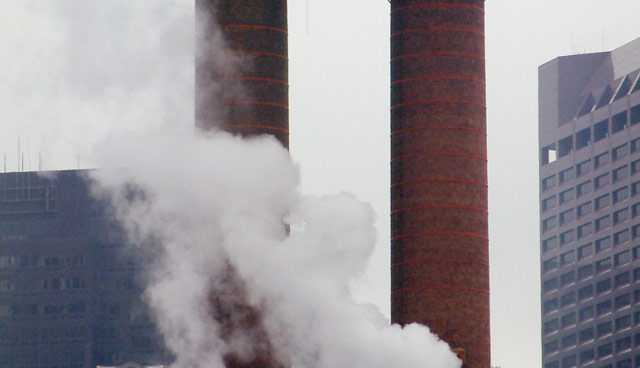Carbon intensity indicators published

A new report published by the Department of Agriculture, Environment and Rural Affairs shows increased levels of carbon intensity in recent years, despite long-term decreases.
The figures, compiled by the Department’s Statistics and Analytical Services Branch, measure greenhouse gas emissions per unit of output or per capita and by industry to show average changes within industries and areas of everyday life. They show that greenhouse gas emissions per capita decreased by 28 per cent in the period between 1990 and 2016. In that time, the average CO2 emission per person fell from 15.3 tonnes to 11, a figure that stood still between 2015 and 2016; with a population increase of 17 per cent over the same period, the CO2 decrease stands at 16 per cent in real terms.
The economy has grown while emissions decreased, with a 57 per cent drop in the ratio of greenhouse gas to gross value added (GVA), from 1.26kg of CO2 per pound added in 1998 dropping to 0.54kg per pound in 2016, with a drop of 2 per cent between 2015 and 2016.
Car emissions rising
However, there may be some cause for concern with the report indicating that road transport emissions rose by 1 per cent between 2008 and 2016, including a 4 per cent rise from 2015. The average vehicle emitted 246g of CO2 per kilometre travelled by 2016. The change is said to have been driven by a “decrease in road transport greenhouse gas emissions which was due to improvements in average fuel efficiency of vehicle” with kilometres travelled remaining steady.
The shift from carbon-intensive fuels such as oil and coal has been credited with the long-term falls in emissions per unit of electricity generated and per household. The amount of CO2 produced per unit of electricity fell from 631g per kilowatt in 2004 to 492g/kWh in 2016, a 22 per cent drop, but again 2016’s rate was an increase from the previous year, this time 5 per cent. Residential greenhouse gas per household saw an 8 per cent drop between 2008 and 2016, but a substantial increase in the number of households is being blamed for a 4 per cent rise between 2015 and 2016.
Despite a 66 per cent expansion of milk production since 1990, related CO2 emissions fell 33 per cent between then and 2016, with a 1 per cent rise from 2015. The number of cows has remained stable in that time, the decrease is said to lie in a substantial improvement in milk yield per cow.
Waste CO2 steadily falling
Waste management is one of the few sectors to maintain its long-term drop on a more recent scale, with its 64 per cent since 1990 being contributed to by a 3 per cent drop from 2015. When adjusted for the population rise, the real figure lies at 58 per cent, mainly due to the introduction of methane capture and oxidation systems at landfill sites.





